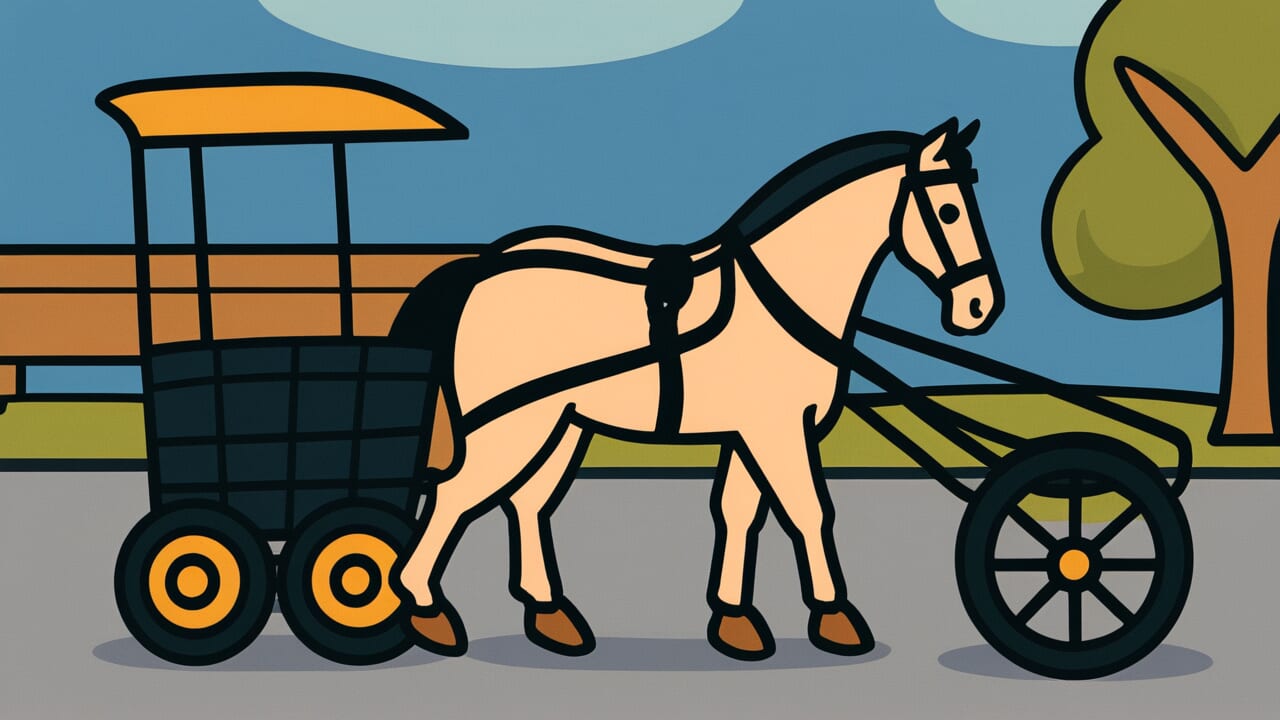How to Read “Put the cart before the horse”
Kuruma wo uma no mae ni oku
Meaning of “Put the cart before the horse”
This proverb teaches that everything has a proper order that must be followed. When you get the order wrong, you cannot accomplish anything.
A horse-drawn cart only works when the horse is in front pulling the cart. In the same way, all tasks have a correct sequence.
People use this saying in several situations. It applies when someone tries advanced work without mastering the basics first.
It also fits when someone jumps into action without proper preparation. Or when someone tries to fix results without addressing the root cause.
No matter how hard you work, doing things in the wrong order brings no results.
Modern society often pushes us to seek efficiency and skip steps. But this proverb sounds a warning.
There is another Japanese saying: “Make haste slowly.” Following the proper order is actually the most reliable and efficient path.
Origin and Etymology
No clear written records explain the exact origin of this proverb. However, the structure of the phrase offers interesting insights.
The expression “Put the cart before the horse” makes the absurdity obvious when you think about how horse-drawn carts work.
A cart functions only when the horse is in front pulling it. Reverse this order, and nothing moves.
It does not matter how fine the cart is or how strong the horse is.
This expression likely emerged after the Meiji period, when Western horse-cart culture entered Japan in earnest.
Before that time, ox-carts and rickshaws were common in Japan. As horse-drawn carts spread, people noticed how rational their design was.
English has an almost identical proverb: “putting the cart before the horse.” The Japanese saying was probably influenced by this Western expression.
However, Japanese uses the general word “kuruma” (cart) rather than specifying a cargo cart. This makes the phrase more universal.
This proverb uses a familiar tool to teach a clear lesson. Everything has a proper order, and ignoring that order makes things fail.
Usage Examples
- Learning programming before mastering basic computer operations is like putting the cart before the horse
- Trying to increase sales before improving product quality puts the cart before the horse
Universal Wisdom
The proverb “Put the cart before the horse” has been passed down through generations. It reflects a deep understanding of human nature.
Specifically, it addresses our tendency to rush toward results while neglecting the process.
Everyone wants to achieve success quickly. We become captivated by visible results.
Meanwhile, we find the steady preparation and foundation-building tedious. We see the glamorous image of success but miss the humble accumulation that leads there.
Our ancestors understood a fundamental truth. Even with an excellent cart and a powerful horse, getting the order wrong means you cannot move forward.
Everything has a natural flow. Fighting against that flow and forcing things actually creates detours.
This proverb survives across ages because humans remain unchanged. Even after thousands of years, we still seek shortcuts and want to skip steps.
At the same time, we have repeatedly experienced the failures that come from giving in to that temptation.
The importance of following proper order is universal wisdom. It comes from humanity’s accumulated history of both failures and successes.
When AI Hears This
In systems engineering, every mechanism has an “energy source” and an “output device.” Getting their order wrong stops the entire system.
In the horse-and-cart relationship, the horse is the energy source and the cart is the output device. Physical laws determine this sequence, so reversing it never works.
What is interesting is that most real-world failures involve fixing “appearance problems” while ignoring “fundamental driving forces.”
For example, when companies face poor performance, they change logos or renovate offices. This is just polishing the cart while failing to feed the horse.
The horse represents employee motivation and product quality. Systems theory calls such interventions “low leverage points.” No matter how hard you work on them, the effect is minimal.
More seriously, reversing the order creates “negative feedback loops.” When the cart is placed in front, the horse cannot move and becomes exhausted.
This makes it even less able to move. In business terms, focusing only on appearances without results makes employees feel “management does not see the essence.”
Morale drops, and performance worsens further.
Systems thinking researcher Donella Meadows classified intervention points into twelve levels. She showed that changing “system purpose” is 100 times more effective than adjusting “parameters” like numerical targets.
The feed that moves the horse is the true purpose of the system.
Lessons for Today
This proverb teaches modern people that impatience is our greatest enemy.
We see others’ success on social media and face pressure for instant results. In such a society, we easily lose sight of the value of following proper steps.
But think about it. When you learn something, skipping basics to jump to advanced topics means you eventually must return to basics anyway.
In relationships, seeking deep connections before building trust does not last. At work, chasing results without preparation leads to dead ends.
What matters is calmly assessing what stage you are at now. Then have the courage to proceed step by step in the proper order.
That path may look like a detour, but it is actually the most reliable shortcut.
To move your life’s cart forward, first place the horse in the correct position. Following proper order is never a waste of time.
It is the best investment in your future.



Comments